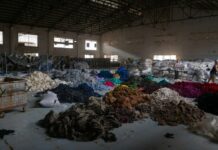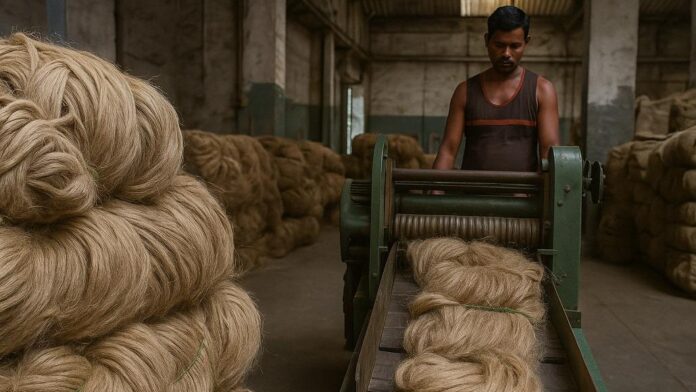India has launched a mid-term review of the anti-dumping duty (ADD) currently applied to jute products imported from Bangladesh and Nepal. This action comes in response to requests from the Jute Mills Association and the AP Mesta Twine Mills Association, as detailed in a recent notification from the Directorate General of Trade Remedies (DGTR).
The review will consider data from April 2024 to March 2025, while the injury investigation will focus on the periods from April 2021 to March 2024. Complainants in this case have raised concerns about a decline in export prices and have alleged that producers are operating beyond their designated capacities, indicating that goods may be routed from other manufacturers.
The products under examination include jute yarn, twine, hessian fabric, sacking bags, and sacking cloth.
The notification issued on June 30 stated, “On the basis of the duly substantiated application by the domestic producers of like article in India, and having satisfied itself, on the basis of prima facie evidence substantiating the need for a mid-term review… the authority, hereby, initiates mid-term review of the anti-dumping duties imposed on imports.”
India first instituted the ADD on jute products in January 2017. Following this initial imposition, an anti-circumvention investigation was launched in March 2018 regarding imports of jute sacking cloth from Bangladesh. The finance ministry later extended the duty on sacking bags in June 2019.
In September 2021, the DGTR conducted a sunset review investigation and suggested that the ADD on jute imports from Bangladesh and Nepal should continue. This recommendation was confirmed by the finance ministry on December 30, 2022.
Additionally, on June 27 of this year, India banned the import of certain jute products and woven fabrics from Bangladesh via land routes. However, these products can still be imported through the Nhava Sheva seaport in Maharashtra. This scrutiny underscores India’s effort to safeguard its domestic jute industry while maintaining trade relations with neighboring countries. As the mid-term review unfolds, stakeholders are keenly observing developments that could impact pricing and supply chain dynamics in the jute sector.


































